
Table of Contents:
– Background
– Look and Feel
– Reticle Design
– Comparative Optical Evaluation
– Mechanical Testing and Reticle Size and Cant
– Summary and Conclusion
– Your Pro and Con Breakdown:
– Testing Methodology
Background:
Probably the first thing that comes to mind when I think about Primary Arms Optics scopes is their reticles. Primary Arms Optics have always been creative and thoughtful in their designs, and I remember having a profitable conversation with their reticle guy a number of years ago when I first became involved in this industry. Many of the PA designs feature pinch gauge type rangefinding features, something I have always been a fan of but that has never been as popular in western optics as it was in Soviet ones. Not too long ago, my brother spent a good deal of time tracking down a used ACOG with the PAO ACSS reticle that includes a vertical pinch gauge basically for that feature. Like this ACOG, most of Primary Arms Optics’ earlier scopes were lower magnification optics intended for the AR platform. Lately though, PA has been adding higher magnification scopes intended for the precision rifle market, such as the two GLx scopes I will be looking at.
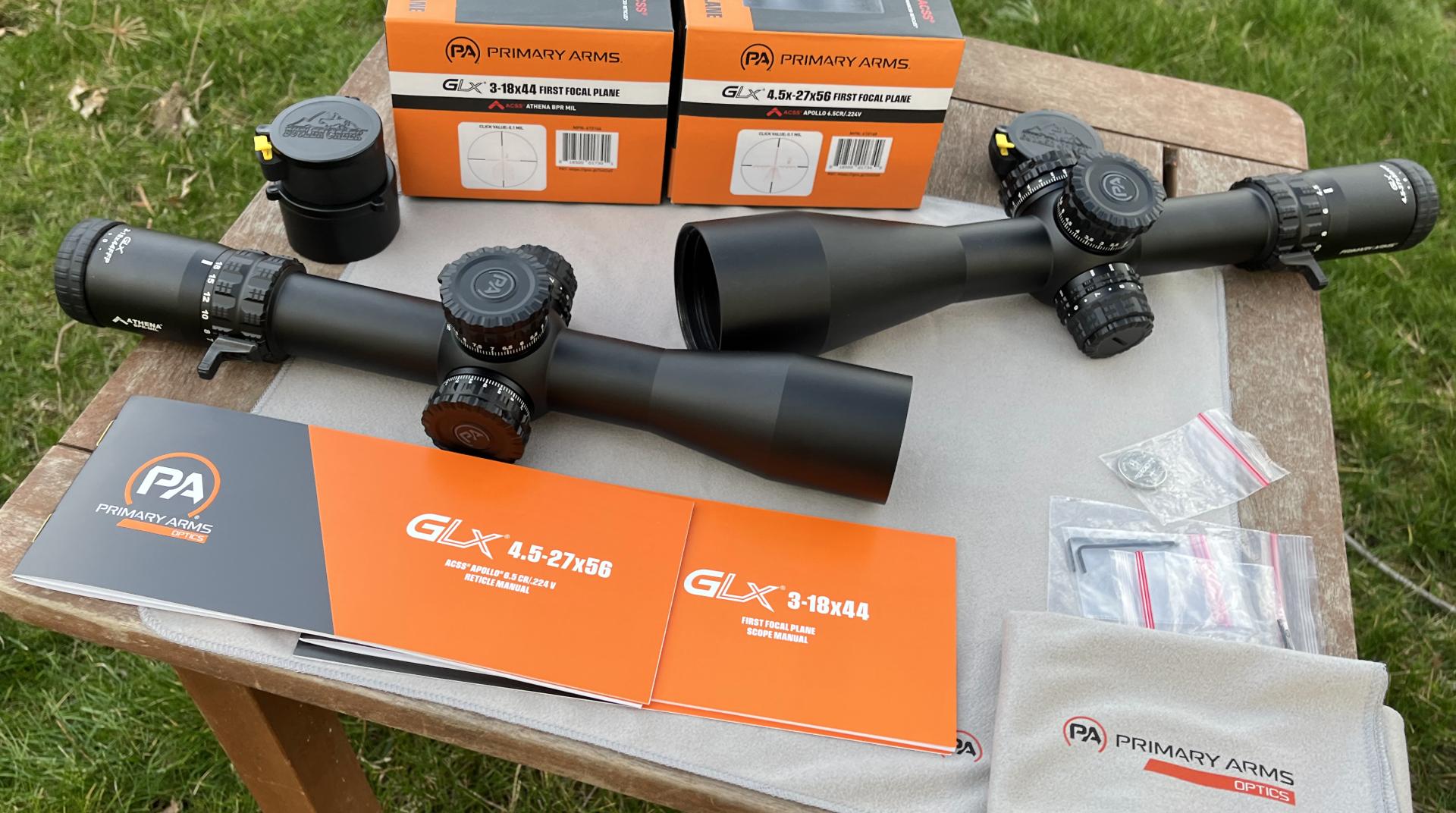
Look and Feel:
The first thing I notice on the GLx 3-18×44 and 4.5-27×56 are the turrets. Both feature elevation and windage turrets that lock at zero. These turrets are translating, which means the whole elevation turret moves up and down when the elevation is adjusted. As with most designs of this type, the rev indicator consists of markings on the turret housing stem instead of being of the pop-up variety and these markings do not reset when the zero is set, so to use them you just have to remember what their zero point looks like. On the GLx adjustments, the turret cap removes with the usual three set screws and underneath is a very unfamiliar looking zero stop and turret lock mechanism. It is much simpler than it looks. It works very much like the common collar style zero stops except that the collar in this design secures to the turret housing instead of moving with the turret plunger as on most others. The instructions PA gives for this are a bit confusing so I will substitute my own instead. In order to disable the zero stop or to have full movement of your elevation turret while zeroing, loosen all the set screws and drop the red collar all the way down. You can next zero the scope either by putting back on the turret cap or by using a little screwdriver on the top of the turret itself and counting the clicks. Once zeroed, to set zero stop and turret lock, slide the red ZS collar all the way up and carefully tighten the ZS set screws. Be careful and use very little force when tightening the screws, as they are small and impinge on the soft aluminum collar. Replace the turret cap aligning the zero with the zero marking and carefully, lightly, tighten its three set screws. The travel below zero will be a preset ~.4 mils and the turret will lock at zero. It’s a nice, functional, feature rich system. The turrets also have good feel and the relative stiffness of the clicks to the between click travels is well-calibrated so you won’t skip over clicks and lose count. Turrets are 10mil / turn and there is no stop on the windage so you can use its full travel range. Speaking of travel range, The GLx scopes have very high elevation travel. The 4.5-27×56 example I have had a travel of 39.8 mils and the 3-18×44 had an almost unbelievable 59.5 mils. Given the huge elevation range and close focus of about 20yds, you can be sure some rimfire guys are going to be interested.
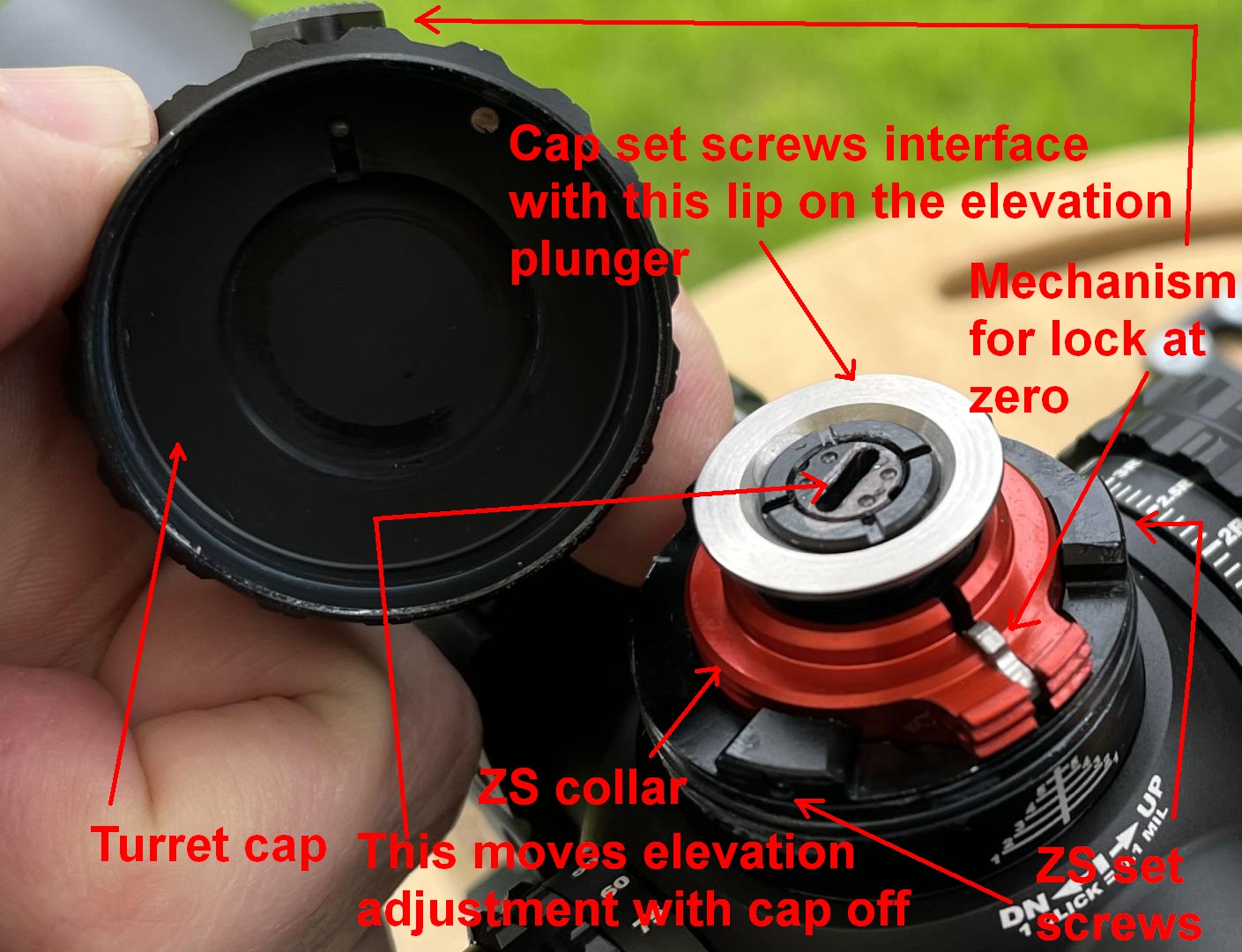
As for the other adjustments, the diopters are euro type and aren’t about to accidentally move as they are super stiff. Side focus parallax and illumination are both housed on the left side of the saddle. The illumination is nice and stiff so it shouldn’t accidentally get adjusted when moving the parallax. Even if it does, PA has incorporated a battery saver feature called Auto Live™ that will turn the illumination off if the scope is not moved for some time or is oriented vertically as it would be when being carried. The parallax knob stiffness is nicely calibrated. The power adjustment is a bit on the stiff side but does include an optional throw lever. This attaches at only one location, but the fact the throw for the entire power range is only 180 degrees means you probably won’t need any optional mounting positions.
Reticle Design:
Given Primary Arms’ reputation for creative reticles, it should not be surprising that they did not go with the now almost standard mil hash and MOA hash Christmas tree offerings for their GLx 3-18×44 and 4.5-27×56 scopes. Both offerings do have a mil tree option, but at this point, neither has an MOA tree. Instead, the other offerings for each scope are a unique BDC / mil mixed design
We will start with the mil tree reticle. In both scope models, this is the same reticle design, called the ACSS Athena BPR MIL. Though this has a few features different than your typical mil tree reticle, you will immediately recognize everything it is and everything it does. The crosshairs itself are graduated .2mils in the center section followed by a fine .1mil section, and then a course .5 mil section. For the most part, it is labeled every 2 mils, though the center section does not contain a label until 4 mils. Below the horizon, the tree in the Athena BPR MIL is graduated in .5 mils both in the vertical and horizontal. It is also labeled every 2 mils. They have done very well in placing the 2, 4, and 6 mil labels on the tree so that these labels correctly mark for both the vertical and horizontal directions eliminating a point of confusion in many competing reticle designs. The only really unusual features on this BPR MIL reticle are that the center of the reticle is the point of a chevron instead of the center of a dot and that it contains a pinch gauge type rapid ranging gauge. I’m a fan of using the point of a chevron for the center. I have always liked that concept from the time Trijicon started doing it in their ACOGS. I also like the inclusion of a rapid ranging function. In the case of this one, it simultaneously ranges 18” in the horizontal or 5’10” in the vertical. Things I don’t like about the BPR MIL are that the 12 o’clock post is full height, whereas I’ve become of the opinion that I would rather not have any 12 o’clock post at all. I also find the tree to be a bit thick and am not sure I want a tree at all anymore either. There are a lot of different graduation schemes at work here. I do see why each is done in this case but, I’m still not sure the graduation changes are providing that much enhancement in function. Overall, I find the BPR MIL a unique take on the theme of a mil tree reticle that is functional and well thought out by somebody who understands why they made the decisions they did.
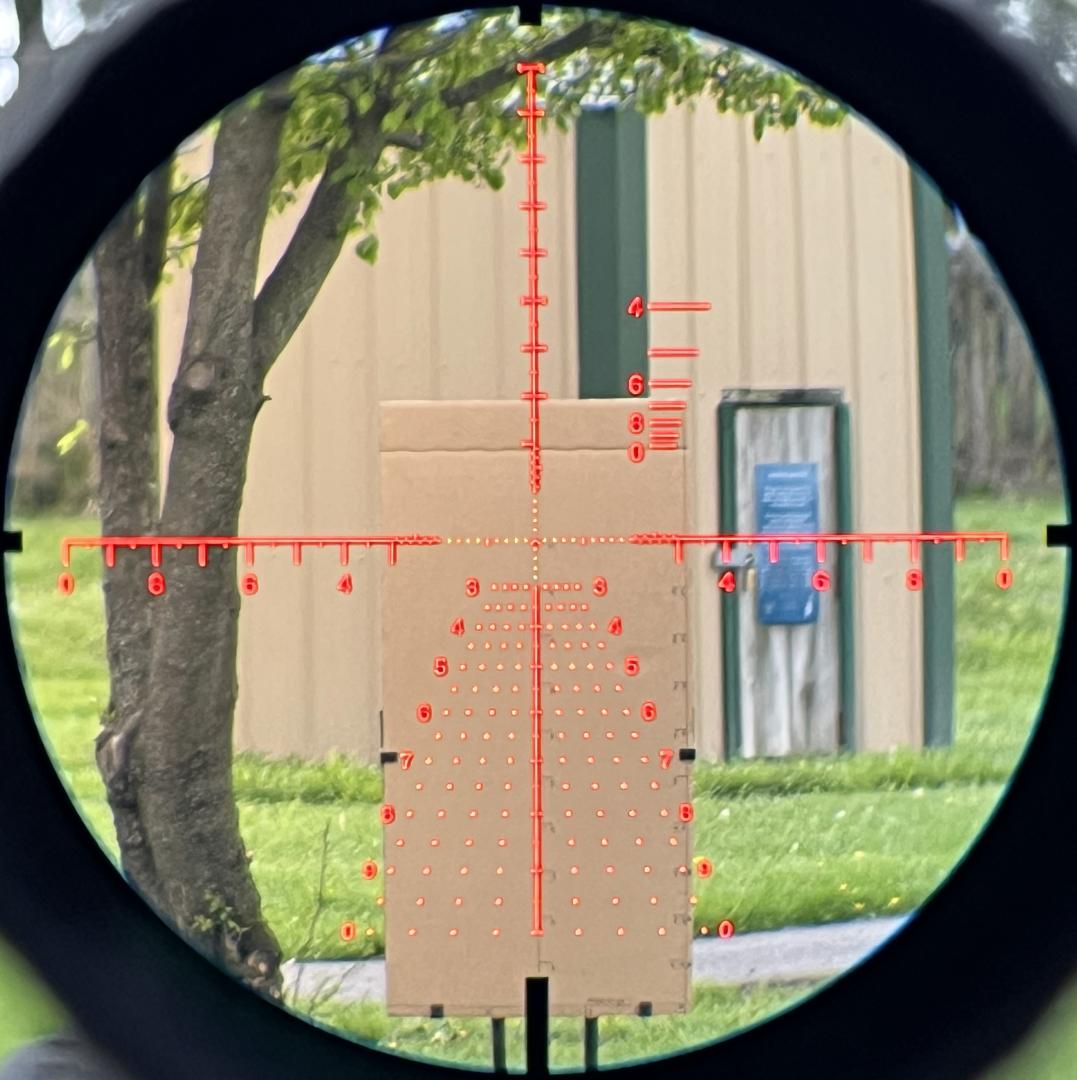
The alternate reticle options for the Primary Arms GLx 3-18×44 and 4.5-27×56 scopes are the unusual ones. These reticles are a mixture of BDC and mil functions. The particular one present in the GLx 4.5-27×56 sample is called the ACSS Apollo 6.5CR/.224V and is calibrated for 6.5 Creedmoor / .224 Valkyrie. In this reticle, the 9, 3, and 12o’clock posts are all graduated in mils, but everything below the horizon is BDC calibrated for the 6.5CM/.224V. This BDC section has drop lines at each 100-yard increment and dots in the horizontal indicating 5, 10, 15,and 20mph wind holds. For those interested, the drop values they used are: 300yds=1.0 mils, 400=1.8, 500=2.7, 600=3.6, 700=4.7, 800=5.8, 900=7.0, and 1k=9.3. Based on how this lined up with some of the data from my PurePrecision 6.5 CM, these values look like a slippery 6.5CM loaded pretty hot and being used at fairly high altitude. In addition to the mil and BDC sections, the Primary Arms ACSS Apollo reticles have the same pinch gauge present in the Athena mil reticles. These Apollo BDC reticles are an interesting idea. They are different than what other people are doing and this provides some market differentiation. Most scopes that have reticles with BDC features do not have a lot of real precision rifle features. Typically, scopes with BDC reticles are 2nd focal plane, don’t have good turrets, and do not also have mil features. The Apollo reticles in the Primary Arms GLx scopes have all these things. I should also note that most typical BDC reticles in higher power scopes are often not actually calibrated for anything specifically. The scope company might make one “general” BDC reticle and a reference table with what each line should correspond to for a number of different calibers. I have never understood this. If I need a reference table, why not buy a reticle graduated in proper mils and use a similar reference table with that? By their very nature, BDC reticles are specific. Making a general one does not make any sense. Depending on which Primary Arms GLx model is of interest, Apollo BDC reticles can come calibrated for 6.5CR/.224V, .308/6.5GDL, 5.56/5.45/.308, or 7.62×39/.300BLK in the case of one 2x Prism scope. Most GLx models have just one or two of the options available. The higher power stuff generally features the faster, ballistically superior calibers. The GLx 3-18x 44 can be hag in 6.5CR/.224V or .308/6.5GDL and the 4.5-27×56 in just 6.5CR/.224V.
Comparative Optical Evaluation:
The larger of the two Primary Arms GLx’s examined here, the 4.5-27×56, at $900 is the most expensive of the scopes in this years sub-$1k series of reviews. Its little brother, the GLx 3-18×44 comes in at $749. The other scopes these will be optically compared to range from the Arken EP-5 at $530 to the Hi-Lux PR5 5-25×56 at $849. In addition to the other sub $1k scopes from this year’s series, these GLx scopes will also be compared to the Athlon Midas TAC 6-24×50 at $649 which is included in order to tie this year’s series to the sub-$1k series a few years ago. Most of those scopes, including that Athlon, are still on the market competing in this segment. Though all of the scopes being compared are sub $1k, that is quite a cost spread. This is especially true when thinking in fractional terms instead of absolute dollars. The least expensive model is not far from half the cost of the most expensive.
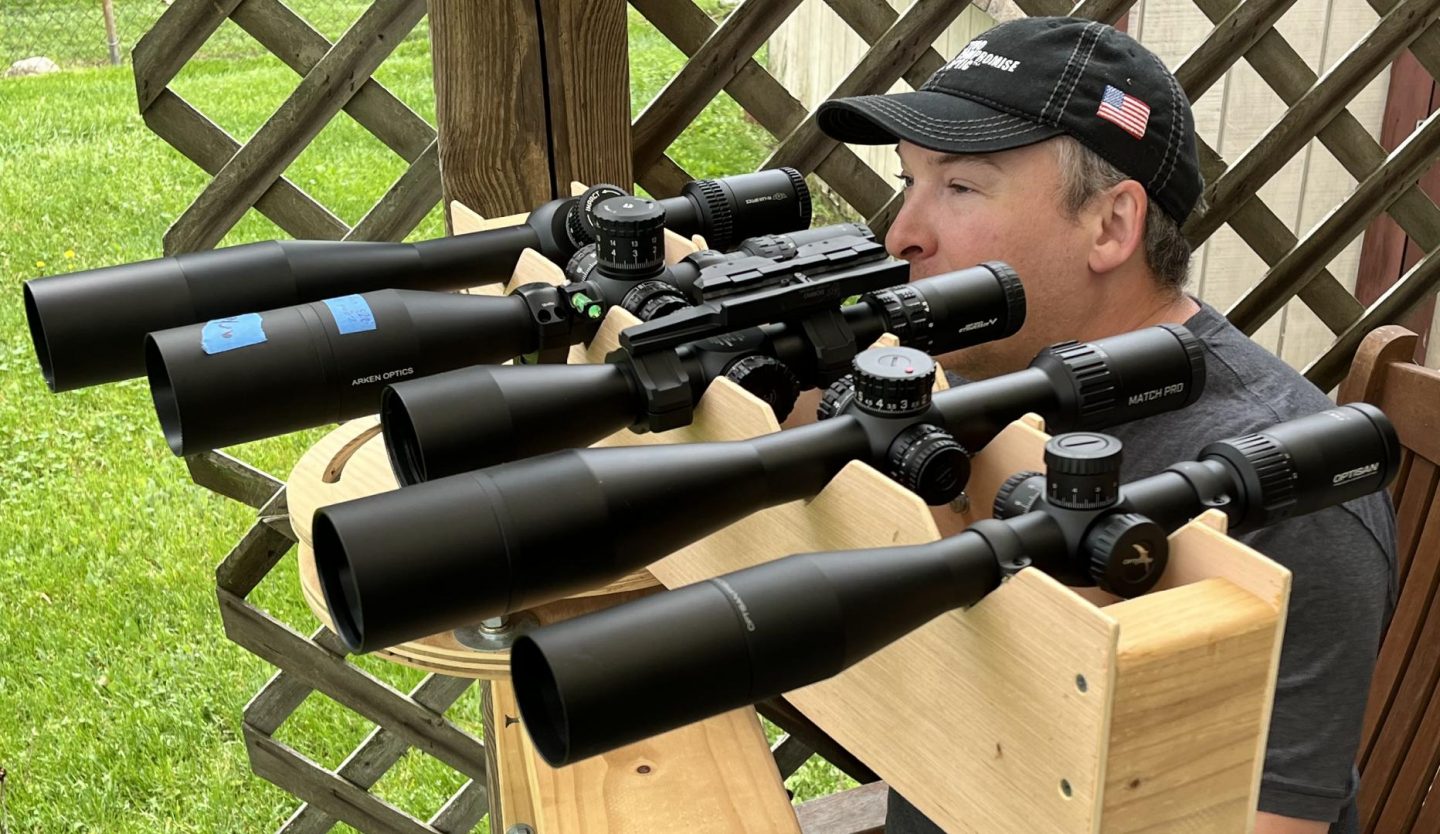
This brings us to the optical performance of the Primary Arms GLx 4.5-27×56 and 3-18×44. I will speak of them as if they were one scope. Outside of low light performance, in which the 4.5-27 with its 56mm objective is noticeably better than the 44mm 3-18x, these scopes are so similar in optical performance that I doubt I could differentiate them on that aspect alone, so, I think it makes sense speak of them as one.
The GLx’s did not do well optically either relative to the other sub $1k scopes or even without any comparisons. I say without any comparisons because I found these two scopes gave me eye strain when using them for substantial periods of time. I also frequently found myself adjusting the parallax or diopter trying to get a better picture to no avail, as I had already optimized the diopter for my eye and already set the parallax for the target – and I had not erred in either operation. It was just hard to shake the feeling that some setting must be wrong and in need of adjusting to improve the picture.
When it comes to the optical breakdown, I think it was some combination of the resolution and eyebox that caused me the most distress. In both measures of performance, the GLx scopes were the lowest performers and there was a substantial gap between them and the next scope up in performance, though, they also performed poorly in color rendition, where I found a noticeable yellow tint and felt other colors seemed washed out. The GLx scopes also showed noticeable barrel distortion, however distortion of this type, though crucial in a 1x optic, hardly matters in a high magnification optic. I would never even notice if I didn’t specifically test for it. In any case, I don’t think it was color rendition or distortion that was making my viewing experience unpleasant,I think it was the combination of the poor resolution resolution and tight eyebox.
In other areas of optical performance, the PA scopes performed well or fine. For instance, they have massive depth of field. They were easily best in class here, besting even the Leupold Mark 5HD, a much more expensive scope that is itself fantastic in depth of field performance. In chromatic aberration, the PA scopes performed fine as well. They were middle of the pack comparatively and all the scopes did well enough for the price point. The GLx scopes were on the lower side of the pack for contrast, but I felt the performance was good enough. The field of view on the GLx scopes is about average, maybe a little above.

Mechanical Testing and Reticle Size and Cant:
Mechanical Background: Most scopes have some deviation from perfect adjustment magnitude, though they are doing far better now than just a few years ago. This adjustment magnitude error will vary from example to example within the same model of scope. This is because it is not a product of design errors, but rather variances introduced in manufacturing and, particularly, the assembly. So, the performance of my test samples is a piece of information with only limited value due to representing only one example. Often, we measure adjustment magnitude error as a percentage, such that a scope whose reticle moves 10.1 mils when adjusted 10.0 mils tracks at 101% and one who’s reticle moves 9.9 mils when 10.0 is dialed tracks at 99%. Frank has helpfully compiled a list of adjustment deviation of all scopes he has tested in class that can give you an idea of how often, and by how much, adjustment magnitude deviates from ideal. Notably, error in adjustment magnitude error can be corrected for in many ballistic software packages by entering a factor such as the “sight scale factor” in Applied Ballistics Elite.
Mechanically, the two Primary Arms GLx scopes did quite well. The 3-18×44 had no reticle cant, it’s reticle size showed no measurable deviation from correct on target, and it’s adjustments tracked with no measurable error out to the full 20.0 mils up I can precisely measure after which they continued to go to a full 29.5 mils in that direction. Going down, they also showed less than 1% error out to the full 20.0 mils measurable after which they continued to 30.0. That adds up to a shocking 59.5 total mils of elevation travel.
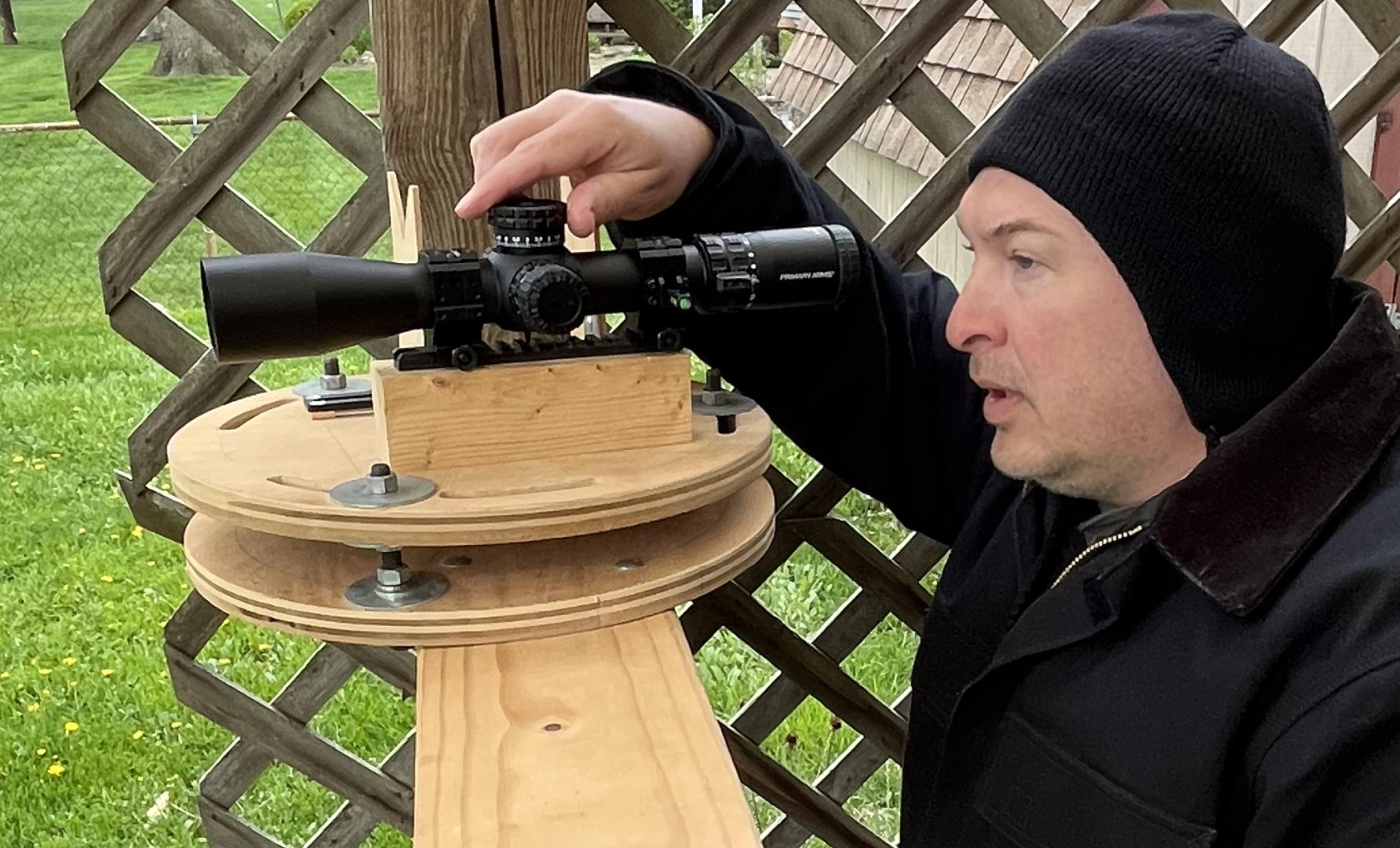
The larger Primary Arms GLx 4.5-27×56 was not quite as mechanically perfect as its little brother, but still did quite well. It had a reticle cant counter-clockwise relative to the adjustments of .12mils in 10 mils travel, or .69 degrees. Like its little brother, its reticle did not show size error. As with the smaller GLx, the 4.5-27×56 had less than 1% error when adjusting up from optical center to 19.4 mils where it stopped and also going down where it traveled 20.4 mils for an excellent total elevation travel of 39.8 mils. Neither scope showed any zero shift with diopter, parallax, or power ring.
As with many other scopes, the Primary Arms GLx scopes do not have a revolution stop on their windage knob. This allows you to utilize the full windage range that exists in the tube. Of course, as you move the elevation up or down from center, the space in the main tube becomes narrower and you have less windage movement. Also, as is common, you can “tube out”. This is a condition where your windage knob continues to move after you run out of room but you are now inadvertently adjusting both elevation and windage as the erector tube is now resting on the inside of the main tube and the windage adjustment instead of on the elevation adjustment and windage adjustment. Novice users who do not understand this and try to dial both windage and drop at extremes can therefore easily end up way off target without knowing why. This is something to be aware of on scopes that do not artificially limit your windage travel – and even some that do. On the GLx 3-18×44, when you are at full up on the elevation, you get about 11.6 mils windage each way before tubing out. On the 4.5-27×56, you get around 4.1 mils. Neither scope could tube out at any windage amount when only 10.0 mils up from zero. This is unsurprising as both have a huge adjustment range. It also means that in normal use, most users would not encounter a situation where they might tube out.
Summary and Conclusion:
The Primary Arms Optics GLx 4.5-27×56 and its little brother the 3-18×44 have some clear selling points. They are pretty loaded with features. Illumination, zero stop, zero lock, a throw lever, and caps are all included. These scopes also appear to have good QC as I did not have any test points on which either scope was outside of what I would consider an acceptable range when it comes to the mechanicals. Probably their best overall feature is the massive elevation travels both have and the nice feeling adjustments to utilize them. Coupled with the close focus parallax, this makes them good candidates for long range .22lr. This is especially so for the smaller 44mm GLx 3-18×44 with its massive 59.5 mils of travel. Both of these scopes also have unique mil / BDC hybrid reticle options in the Apollo reticles that will appeal to some, as they are better thought out than other BDC type options I have seen elsewhere and coupled to more capable feature-rich scopes. The GLx scopes can also be had with a closer to industry norm mil reticle in the Athena reticle option, but they do not currently seem to have any MOA option for those heathens living in the last millennium. Given the current (and for the foreseeable future) state of world politics, it is also notable that both of these scopes are made in the Philippines and not China, as most of the competitors in this price segment are.
Lastly, Primary Arms Optics comes with a lifetime warranty and I have heard good things about their service.
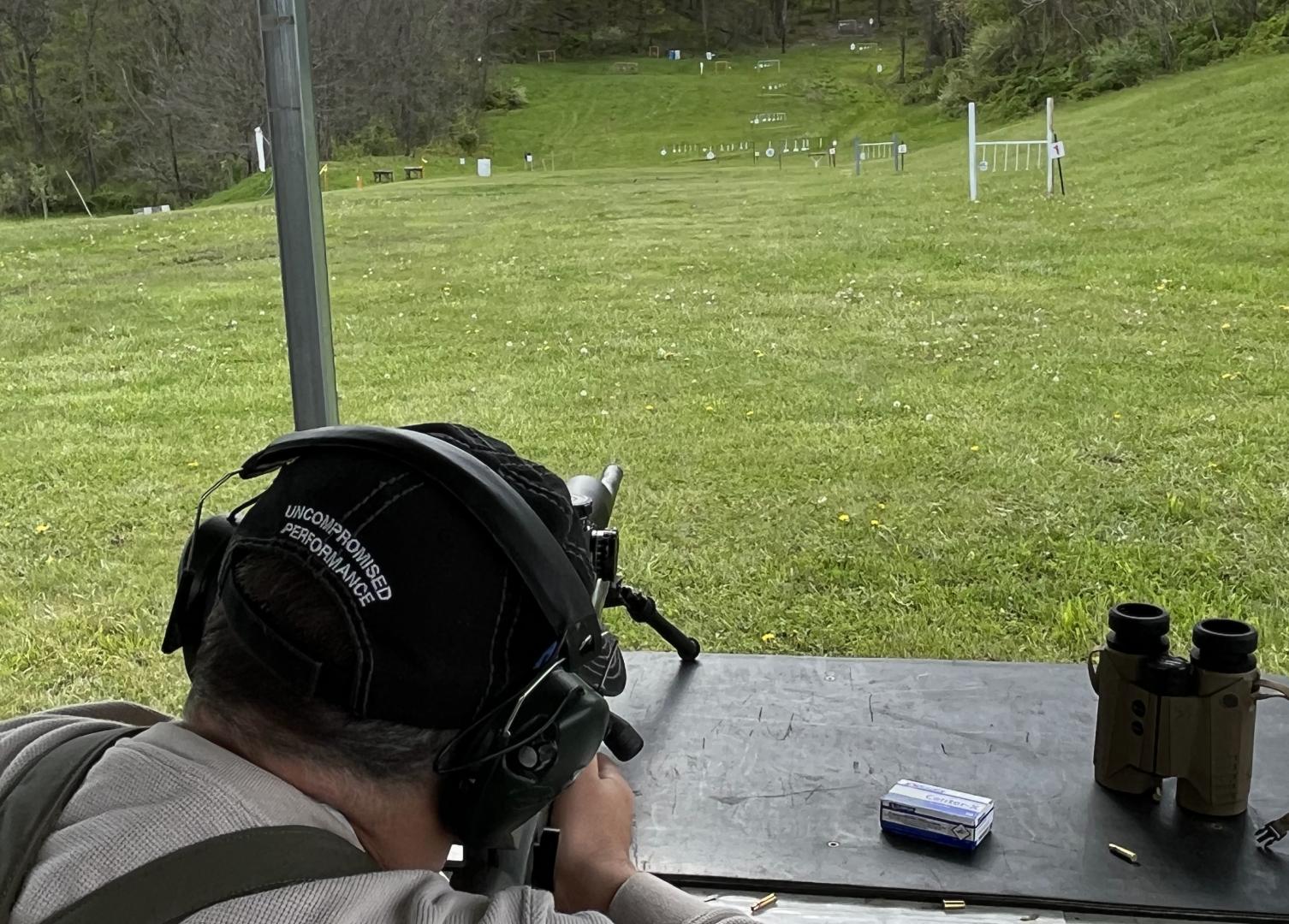
Your Pro and Con Breakdown:
Pros:
– Full-featured elevation with good feel, zero stop, and zero lock
– QC on the mechanical performance was good on both samples
– Unique BDC/Mil reticle option with the Apollo series reticles
– Unique BDC/Mil reticle option with the Apollo series reticles
– Close 25yd focus and massive elevation travel are ideal for long range rimfire use
– Not China made
– Lifetime warranty
Cons:
– Optical performance poor for the price range and causing me eyestrain
– No current MOA option for the heathens and Luddites

